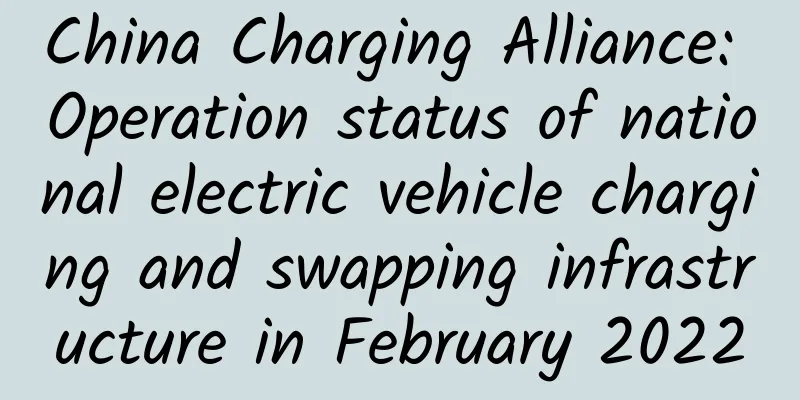China Charging Alliance: Operation status of national electric vehicle charging and swapping infrastructure in February 2022

|
National Electric Vehicle Charging and Replacement in February 2022 Infrastructure operation status 1. Operation of public charging infrastructure: In February 2022, the number of public charging piles increased by 36,000 compared with January 2022, a year-on-year increase of 44.9%. As of February 2022, the member units of the alliance reported a total of 1.213 million public charging piles, including 496,000 DC charging piles, 717,000 AC charging piles, and 589 AC/DC integrated charging piles. From March 2021 to February 2022, the average monthly increase in public charging piles was about 31,000. 2. The operation of public charging infrastructure in provinces, regions and cities. The public charging infrastructure built in the top 10 regions of Guangdong, Shanghai, Jiangsu, Beijing, Zhejiang, Hubei, Shandong, Anhui, Henan and Sichuan accounts for 71.9%. The national charging power is mainly concentrated in Guangdong, Jiangsu, Sichuan, Hebei, Shanxi, Zhejiang, Anhui, Shanghai, Shaanxi, Shandong and other provinces and cities. The power flow is mainly to buses and passenger cars, and other types of vehicles such as sanitation logistics vehicles and taxis account for a small proportion. In February 2022, the total national charging power was about 1.18 billion kWh, a decrease of 70 million kWh from the previous month, a year-on-year increase of 73.0% and a month-on-month decrease of 5.7%. 3. Operation of public charging infrastructure operators. As of February 2022, there are 14 charging operators nationwide with more than 10,000 charging piles, including: Xingxing Charging with 270,000, Teladian with 264,000, State Grid with 196,000, Yunkuai Charging with 156,000, China Southern Power Grid with 41,000, Yiwi Energy with 36,000, Hui Charging with 29,000, Shenzhen Chedian with 26,000, SAIC Anyue with 24,000, Wanma Ai Charging with 21,000, China Putian with 20,000, Wancheng Wan Charging with 13,000, Hengtong Ding Charging with 11,000, and Weilan Kuai Charging with 11,000. These 14 operators account for 92.2% of the total, and the remaining operators account for 7.8% of the total. 4. Operation of vehicle-mounted charging facilities. As of February 2022, 381,000 data on reasons for not installing charging facilities on vehicles were collected. Among them, the three factors of group users building piles on their own, no fixed parking spaces at residence, and no cooperation from property management at residence were the main reasons for not installing charging facilities on vehicles, accounting for 48.6%, 10.3%, and 9.9% respectively, totaling 68.8%. The reasons of no fixed parking spaces at work, difficulty in registration, users choosing to charge at dedicated stations, and other reasons accounted for 31.2%. 5. Overall operation of charging infrastructure: From January to February 2022, the increase in charging infrastructure was 247,000 units, the increase in public charging infrastructure increased by 120.8% year-on-year, and the increase in on-board charging facilities continued to rise, up 282.1% year-on-year. As of February 2022, the cumulative number of charging infrastructure nationwide was 2.864 million units, an increase of 62.9% year-on-year. |
<<: China Automobile Dealers Association: A brief analysis of the used car market in February 2022
Recommend
Tik Tok short video eight resources video tutorial
Tik Tok short video eight resources video tutoria...
10 UI/UX Lessons for Designing a Product from Scratch
[[338502]] In 2016, I realized something very imp...
12 ways to make money: 100,000 yuan a year for beginners to make money with CPS projects
1) Good Project III) Course Introduction 01. The ...
Brand marketing strategy: random event marketing gameplay
This kind of random event marketing method has ne...
What to do if you are emotionally "sick"? There is always someone in this world who loves you, so don't let suicide become an option
Everyone knows that September 10th is the annual ...
What is MBA: Website Optimization Work Plan
The following are the methods and steps for makin...
In the battle between new and old brands, who can win the title of super TV?
From flat-screen TVs to smart TVs, the changes in...
Can plants catch a cold or have a fever? - Plant Attack and Defense
Produced by: Science Popularization China Author:...
Marketing promotion strategy based on user decision
Obviously, users have different decision-making p...
It took me 3 years to dig out the "core business secrets" of self-media
This article will focus on "content products...
Here is a Valentine's Day marketing promotion guide, please check it out!
Show affection and give gifts as they should (the...
Drinking hot water can raise your body temperature and even help you lose weight? Don’t believe it anymore
Hello, this is Science Popularization China. Rece...
What kind of business is talent auction?
Recently, the recruitment field is very hot, and ...
Android four major component application series - realize phone call interception and phone call recording
[[152918]] Use BordercastReceiver and Service com...
Doctor Qingma-Tsinghua Mom Parent Classroom (Chinese version)
Dr. Qingma-Tsinghua Mom Parent Classroom (Chinese...









